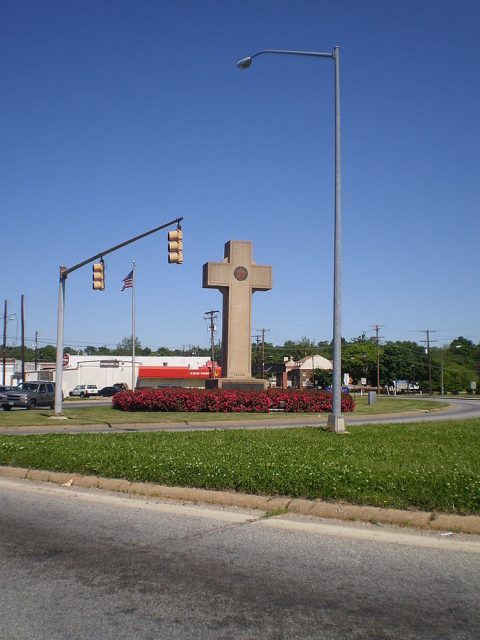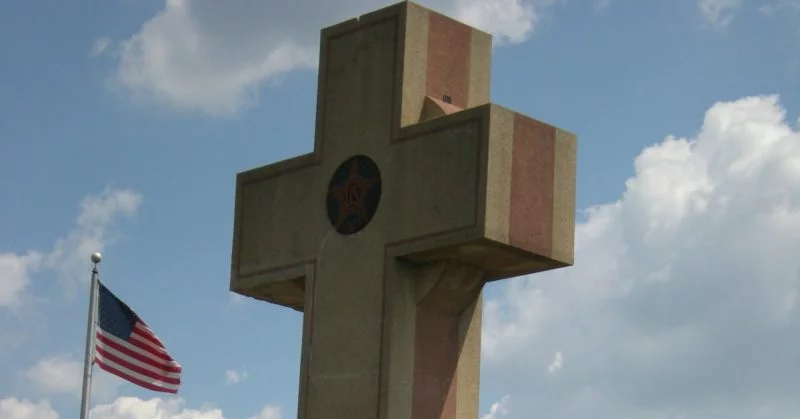Supreme Court: Religious symbols, or anything remotely resembling religious symbols, are under fire these days, viewed by secular societies as an impingement on those who don’t believe in a higher power, who do not wish to see representations of those beliefs in the public sphere.
In America and Canada, public statues, plaques and other symbols have been taken down by governments who assert that these items have no place downtown, in open squares and even in municipal buildings.
In Quebec, for example, the provincial government is banning even religious symbols worn by certain individuals; e.g. Crucifixes worn by school teachers; Stars of David worn by college professors, or hijabs worn by municipal and state workers. Unsurprisingly, the legislature is getting considerable push back from people who see it as a blow to religious freedoms.
In Washington, D.C., the Bladensburg Peace Cross was embroiled in controversy over a similar issue, in this case as a statue perceived by some as religious in nature, specifically Christian. Others argued it was a memorial statue only, nothing more.

The “problem,” as some saw it, lay in the shape of the statue – it’s a 40 foot Latin cross. But it is a memorial to the soldiers of World War I who lost their lives, and was never “intentionally” a Christian symbol, proponents say.
Opponents argued that even if that was not the intention, today it has no place in a culture that tries to not favour or promote one religion over another.
The U.S. Supreme Court disagreed with the latter position, and voted 7–2 that the statue could stay. The court said in its statement that the cross has a “special significance” to the community, and that many monuments of the period were designed in such a fashion, with no desire to offend any other religions.
It did not, however, offer or suggest any new principles for guiding other communities who are battling over this very issue, meaning that hundreds of similar cases across the United States must be settled one by one.
The Peace Cross was erected 100 years ago, right after the Great War concluded in 1918. Its intent was simply to honour the men who served and died.
One of the judges who said the cross should be allowed to remain, Justice Stephen G. Breyer, said in the court’s statement that he may have felt differently about the matter if the sculptor’s intent had been advancing faith: “I see no reason to order this cross torn down simply because other statues would raise constitutional concerns.”

By that, the judge was referring to a 1971 amendment, known as the “Lemon test,” that said governments must not, in their decisions, appear to be promoting one religion over another. Erecting a religious symbol on public land, as the Peace Cross is, could be interpreted as such a decision.
Two judges disagreed with the decision, one of whom was Justice Ruth Bader Ginsburg. In her written dissent, she noted, “As I see it, when a cross is displayed on public property, the government may be presumed to endorse its religious content.”
Ginsburg added that governments must be “neutral” in all matters with even a hint of religious content, which she views in keeping with the Constitution amendment addressing religion. “…(T)he court has eroded that neutrality commitment,” she wrote, “diminishing precedent designed to preserve individual liberty and civic harmony…” Ginsburg also said that relocating the cross would be in everyone’s interests and solve the problem.
But the local parks commission, who fought the case brought forward by the American Humanists Association (AHA), expressed relief that matter was decided. In a statement, the AHA called the decision “misguided.”
Those arguing to keep the statue exactly where it is included Justice Samuel Alito, who wrote that, while this cross is not a Christian symbol per se, removing it could start a heated argument from opposing religious sides. “It (taking it down) would be seen as a hostility toward religion,” he wrote.
Americans United For Separation Of Church And State, an organization that supported the AHA in the heated debate, expressed dismay at the court’s ruling. Its president, Rachel Laser, said, “Just because something is a tradition, doesn’t make it right.”
All the arguments on both sides have been emotional and overwrought, as arguments about anything religious tends to be.
Another Article From Us: Saving Private Ryan: Surprising Facts About Spielberg’s Epic
It bodes well for those who believe statues, particularly old ones, should remain where they are even if some people find them offensive or a contravention of the U.S. Constitution. For those on the opposing side, who believe we need to take a more inclusive approach to symbols, it was a disheartening day, indeed.
